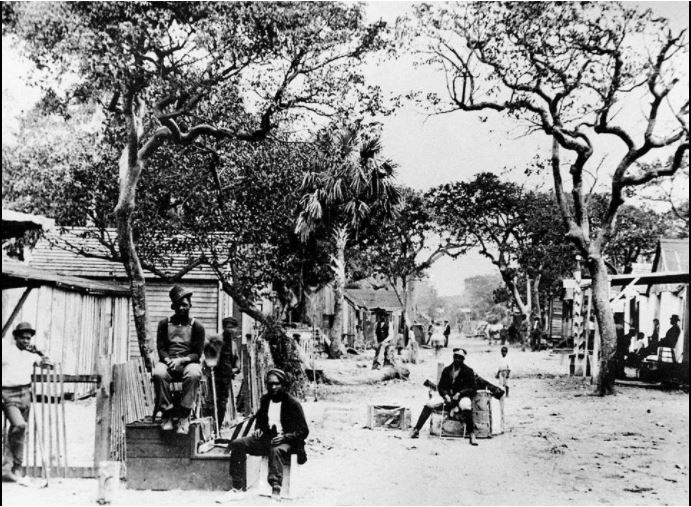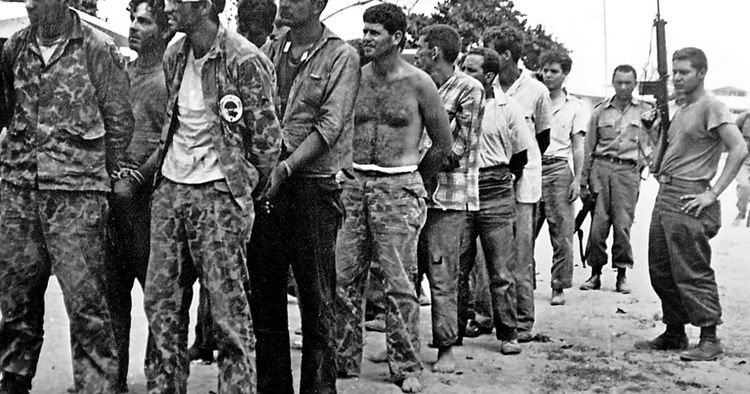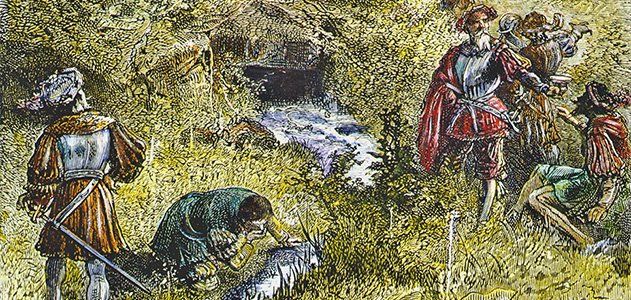History Week of April 9-15

This Week in Florida History
The first train arrived in Miami on April 15, 1896
Having found the date of Flagler’s railroad arriving in Miami on floridahistorynetwork.com’s “On this day in Florida history section,” I was bemused to note that a preliminary search of Florida newspapers in 1896 yielded not one story about Flagler’s railroad reaching Miami on April 15, 1896.[1]The first story I found came from the Ocala Evening Star, in Ocala, Florida, a town about 40 miles south of Gainesville and 300 miles northwest of Miami, several months later in August. Halfway through the half-page story about the editor’s “need for a little outing,” the story finally turns to the “terminus” of the Flagler railroad, Miami, already known as the “Magic City” because, according to this story, “On the first day of last March only two families were living there. Now the town has a population of 2500.” The “two families” is likely a bit of an embellishment, as other sources note that in 1895 260 people were living in what would become Miami the following year. Still, the nickname had merit, as Miami would grow in massive spurts then, as well as during World War I, World War II, the 1960s with the Cuban Revolution, the 1980s, and again as I type this in 2023.
According to floridahistorynetwork.com, Julia Tuttle had settled in the area in the early 1890s and wanted a railroad to be built to it. So, she turned to tycoon Henry Flagler, known for his infrastructure projects, including railroads. Hesitant to waste time and money on a rail line to a swamp on a nearly unusable, shallow bay near nothing, not even to what at the time was a relatively large port city of Key West, 150 miles by ship to the southwest, Flagler refused. But historic freezes through the American Southeast in 1894 and 1895 gave Tuttle the notion to ship Flagler blossoms from her orange trees. Impressed by the agricultural potential and the untouched potential for tourism on the white beaches of South Florida, Flagler agreed, and on April 15, 1896, the first train arrived. In 1897, Flagler opened a hotel on land deeded to him by Tuttle in the deal to bring the train, and the tourism mecca of Miami was born. A little over 15 years later, his East Coast Railway would steam into Key West, hopping numerous small islands called "keys" along the way.
It may be tax day for America in 2023 (ok, technically, tax day is April 18 this year), but for Miami, April 15 is functionally the city’s birthday.

Whites expelled from West Palm Beach’s “colored town,” Pleasant City, April 9, 1921
The Miami News ran a headline in their “The Miami Metropolis” section on April 9, 1921: “Order white people out of negro town in West Palm Beach.” The previous day, West Palm Beach's chief of police evicted a white family from the “colored limits” of town and City Manager Karl Riddle refused a license to a white businessman after the mayor had told him he could have it. Black residents asked, “Why should we be barred from white town if the white people are allowed to reside within our limits and conduct businesses here?”[2] It is worth noting that this incident occurred just five months after the statewide slaughter of Black citizens who had the audacity to organize to vote in the 1920 Presidential election, known as the Ocoee Massacre—to this day, the bloodiest election day in American history. In his outstanding book Emancipation Betrayed, Paul Ortiz writes that the Black organization leading up to the 1920 election functionally created the first statewide civil rights movement in American history and white Floridians violently prevented Black citizens from voting.[3]The residents of West Palm Beach’s Colored Town, though hundreds of miles from the epicenter of raping and lynching of Black men and women voters in the 1920 election, Ocoee, would have known of the massacre if not having survived elements of it in their own community. It is also possible, if not likely, that residents of West Palm Beach County’s Colored Town were aware of the front page above the fold headline from The Miami Herald two weeks earlier “Race riot plot results from negro murders,” with an additional headline of “EXCITEMENT CAUSED,” that notes in the smallest print on the page that the alleged “uprising of negroes” was in fact a hoax. And in Georgia.[4]Racial tensions in Florida in 1921 were extraordinarily high and it is remarkable that residents of “Pleasant City,” as the area was known to the residents who had moved there when forced out of their community “in the Styx,” 20 years earlier, still had the courage to demand, if not equal treatment, that at least the area they were told they could live in, was theirs.[5]
[1] I only searched the newspapers.com database, so this isn’t exhaustive.
[2] The Miami News. “Order White People out of Negro Town in West Palm Beach.” April 9, 1921, sec. The Miami Metropolis.
[3] Ortiz, Paul. Emancipation Betrayed: The Hidden History of Black Organizing and White Violence in Florida from Reconstruction to the Bloody Election of 1920. American Crossroads 16. Berkeley: University of California Press, 2005.
[4] Associated Press. “Race Riot Plot Results from Negro Murders.” The Miami Herald, March 29, 1921.
[5] Sawtelle, Becky. “The History of Pleasant City.” WPEC, February 11, 2021. https://cbs12.com/news/local/the-history-of-pleasant-city.
Alt Text to main image: A steam train with three cars rumbles into Key West. Numerous people, including what appears to be sailors, line the tracks. The text "First train arriving at Key West." is scrawled across the bottom of the image.


